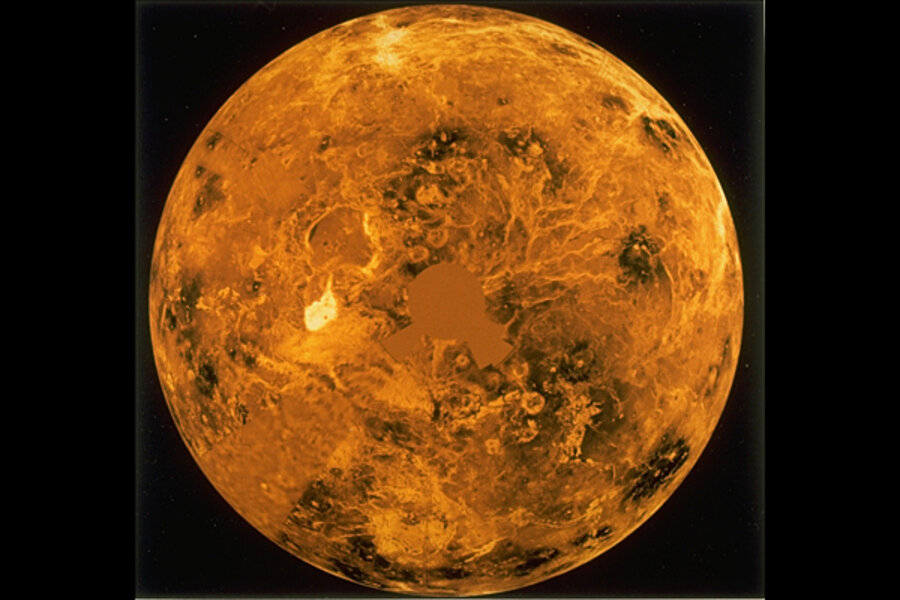Venus might have been habitable once, study suggests
Loading...
Venus, currently one of the most inhospitable places in the solar system, may once have had an ample supply of water – possibly even oceans – and been a potentially habitable place when it was young, a new study suggests.
The finding comes from the European Space Agency (ESA)'s Venus Express satellite currently orbiting our neighboring planet. The probe is providing new evidence that Venus and Earth aren't as dissimilar as they seem.
Earth and Venus are wildly different today. Earth is teeming with life at clement temperatures, while Venus is hellish, its surface hotter than the inside of a kitchen oven.
But the two planets share some striking similarities. They are nearly identical in size and makeup, for example.
"The basic composition of Venus and Earth is very similar," said Håkan Svedhem, ESA project scientist for Venus Express.
Today, Venus has very little water. If the amount of water vapor in the atmosphere of Venus was spread onto the planet's surface, it would create a global puddle just 1.2 inches (3 cm) deep. By comparison, Earth's oceans would create a layer 1.9 miles (3 km) deep if they were spread evenly across our planet.
Yet scientists think this wasn't always the case on Venus. Billions of years ago, the planet may have had much more water, they said.
Over time, Venus is thought to have lost a large quantity of that water to space. As ultraviolet radiation from the sun streams into the planet's atmosphere it breaks up the water molecules into their constituent hydrogen and oxygen atoms. Then these loose atoms escape into space.
Venus Express has measured this escaping water vapor, and found that about twice as much hydrogen as oxygen is escaping, ESA officials said in an announcement. Since water is made of two hydrogen atoms and one oxygen atom, the findings suggest that water is the source of this escaping material.
"Everything points to there being large amounts of water on Venus in the past," said research team member Colin Wilson of Oxford University in England.
But that does not necessarily mean there were vast oceans on Venus, researchers cautioned.
The water could have been mostly locked in the atmosphere of Venus and existed only during the very earliest times, when the surface of the planet was completely molten, according to computer models by researcher Eric Chassefière of France's Universite Paris-Sud.
However, colliding comets may have delivered additional water to the surface of Venus that could have crated standing bodies of water, the researchers said.
If Venus ever did possess surface water, the planet may have had an early habitable phase during which life may have been able to form.
"Much more extensive modeling of the magma ocean–atmosphere system and of its evolution is required to better understand the evolution of the young Venus," Chassefière said.
The Venus Express team discussed some of their findings at the International Venus Conference this week in Aussois, France.
- Gallery - Beneath the Clouds of Venus
- Top 10 Extreme Planet Facts
- Volcanoes on Venus May be Young and Active
Related stories:





